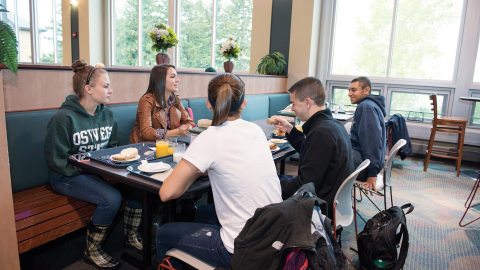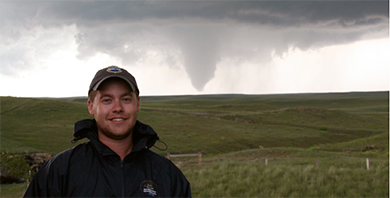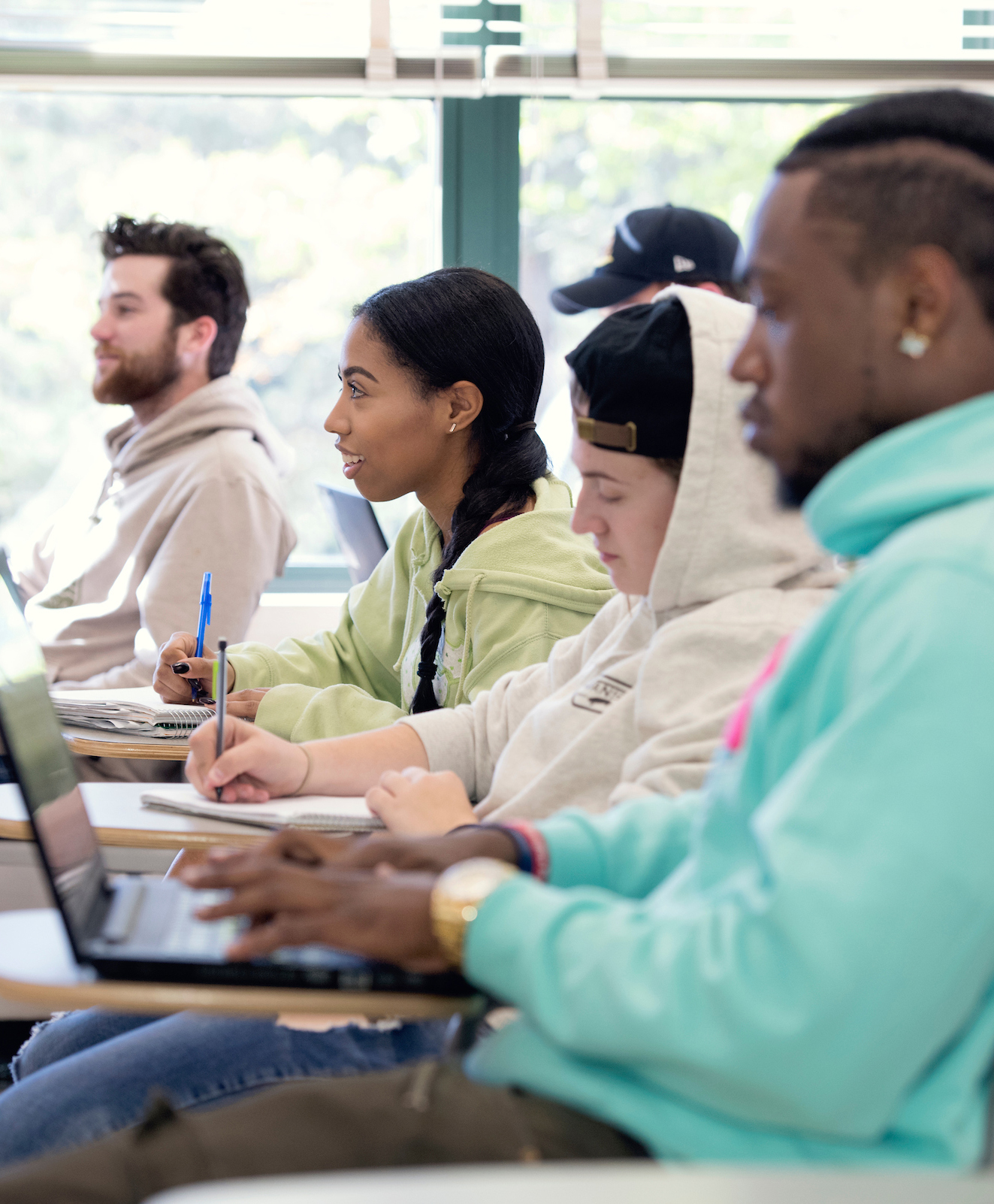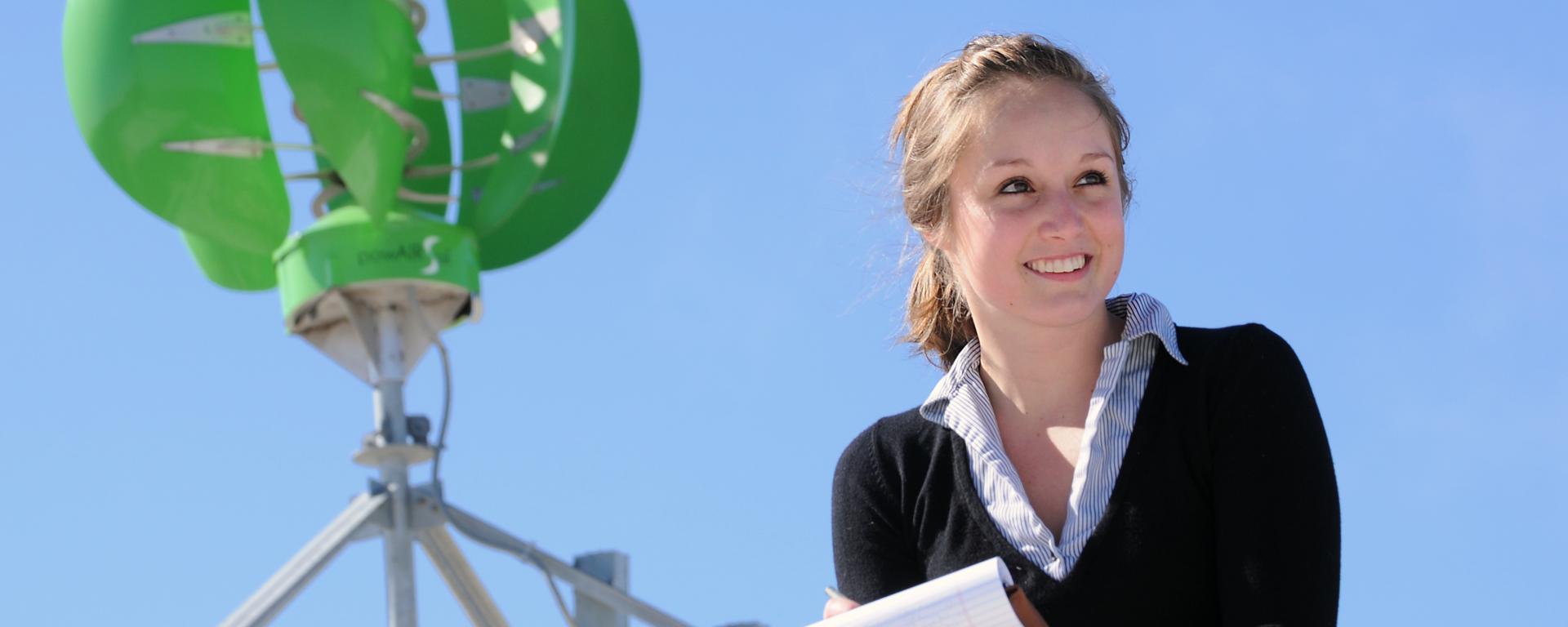Oswego’s meteorology major has a national reputation for producing professionals in the field. As the only state college on a Great Lake, our location will let you experience and study weather phenomena like lake-effect snow and waterspouts.
Overview
Meteorologists study the physical characteristics and processes of the atmosphere that govern weather patterns and climate. We offer specialized study in different subsections of meteorology including atmospheric and cloud physics, climatology, remote sensing, instrumentation, numerical modeling, applied computing, air pollution, and broadcasting.
Participate in our pioneering Storm Chasers summer program where you will forecast, pursue, and observe extreme weather through the Great Plains states. Join the campus chapter of the American Meteorological Society and attend professional AMS conferences with experts in the field. Get on-air experience as a future TV meteorologist at WTOP, our on-campus television station. Find ample chances to develop, execute, and present your own research interests. Our program and alumni success fosters internship opportunities in such places as the National Weather Service, government agencies, private-sector meteorological firms, and television stations. The Storm Chasers have been a successful part of the meteorology program since 2007.
You will have abundant opportunities to engage in hands-on research with faculty through the Lake-Effect Storm Prediction and Research Center. Our observation equipment monitors changes in local weather, with a constant online stream of the latest observational and forecast data. A mesoscale model also provides local forecast data. Interactive graphical interfaces along with specialized graphics provide state-of-the-art visualization for meteorological data. Meteorology lab spaces in the Shineman Center offer hands-on opportunities with advanced tools like our wind tunnel and weather balloon system. Learn more about microsensor instrumentation and build your own surface station.
Curriculum
Bachelor of ScienceShineman Center for Science, Engineering and Innovation
This $118 million-dollar facility serves as the home for the science, computing and engineering programs. This 230,00 square-foot center features a planetarium, three observation decks, a greenhouse, extensive laboratories and state of-the-art equipment.
Outcomes
- Gain ability to design and discuss an atmospheric related experiment including development of a hypothesis, selection of equipment to be used, proposed methods suggested and limitation of the experiment
- Build familiarity with complex computer modeling systems
- Write a weather forecast discussion
- Mathematically formulate and conceptually describe atmospheric processes using as a basis the equations of motion, mass continuity, thermodynamic state and the first law of thermodynamics
Career Opportunities
- Weather forecasting or atmospheric research with the National Weather Service or regional partners
- Environmental assessment, especially in the area of air-pollution studies
- Broadcast TV meteorology
- Private forecasting for oil, shipping and environmental industries
Program Resources

The Oswego Guarantee
- Timely course offerings
- High touch connections to alumni
- Small student to faculty ratio
- Limited room & board increases each year

Storm Chasers
Coinciding with peak tornado season in the U.S., this program teaches students to observe patterns and predict changes in the weather by applying their classroom learning to the forecasting and observation of actual storms.

Internships
Learn what it's like to work in a professional setting while still in school.
Get Involved
The meteorology program offers many ways to get involved on campus outside of academics. Join the American Meteorological Society chapter at Oswego, the Meteorology Club or attend the annual Great Lakes Atmospheric Science Symposium.

Research
Apply the knowledge you learn in the classroom to research in the field and laboratory.


